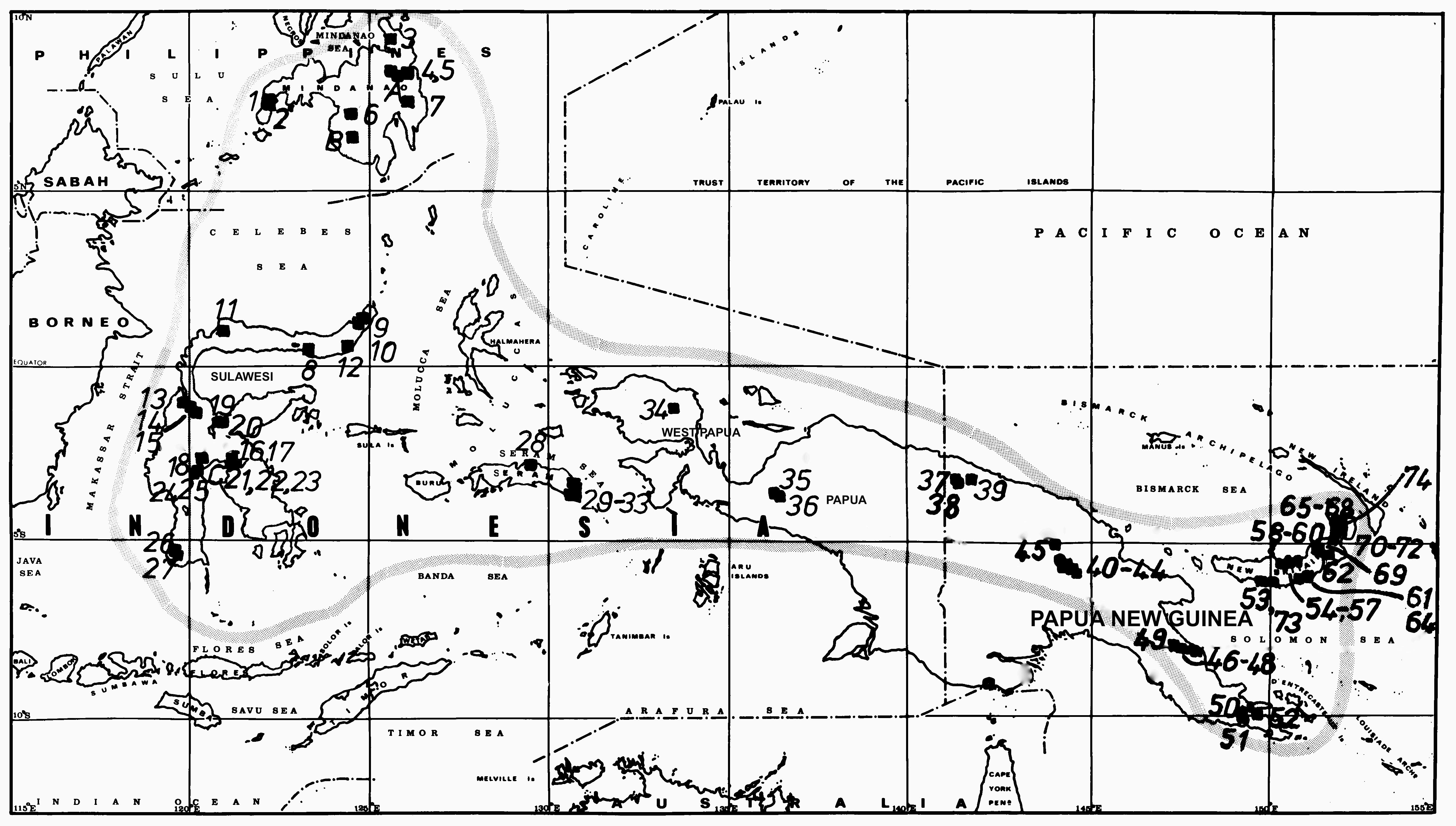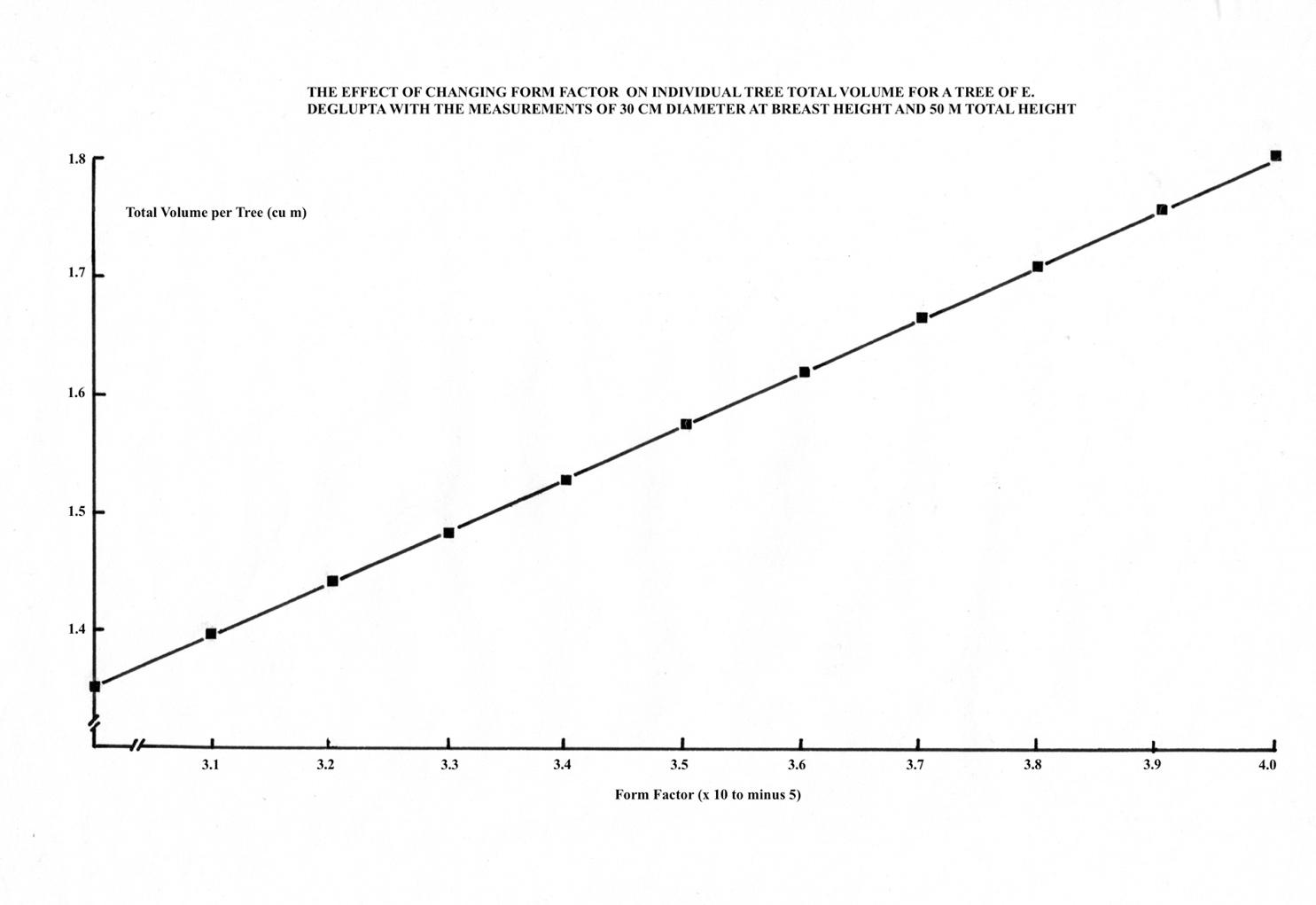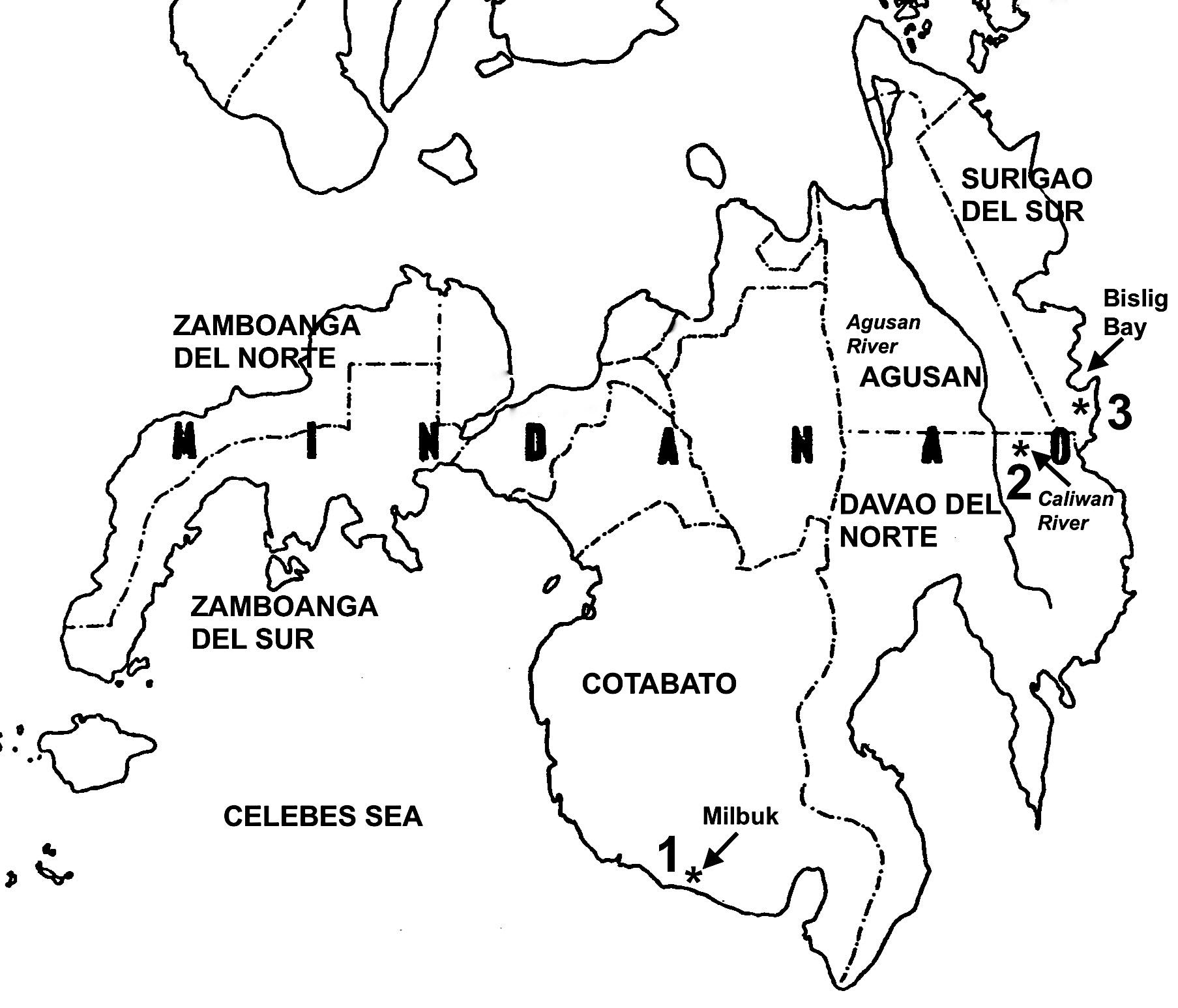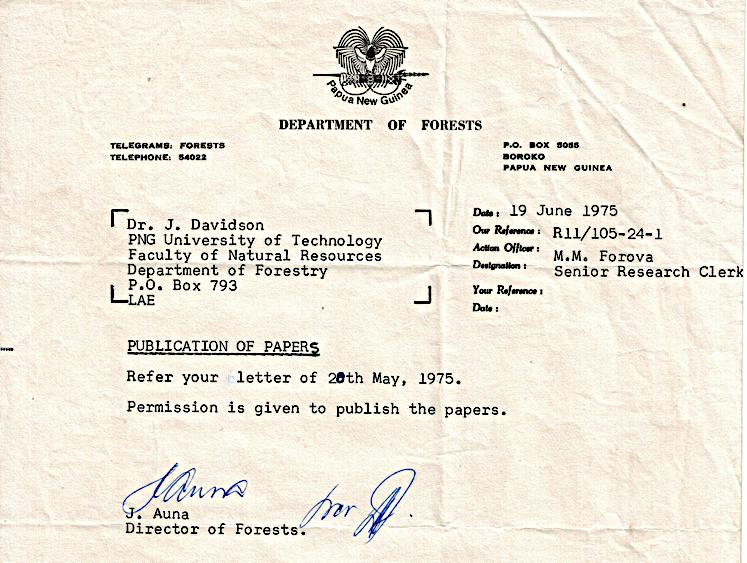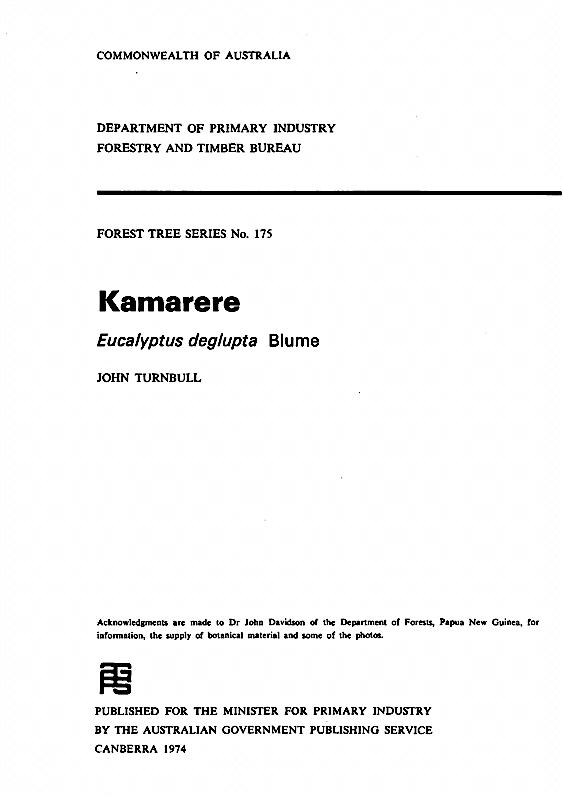
1 minute read
Reprinting of my PhD thesis
from PNGAF MAG ISSUE # 9 B-5B4D3 Dr John Davidson Accompaniment "RAINBOW EUCALYPT MAN" Part 6 of 8 parts
by rbmccarthy
entity”46
an appropriate category, should it be desired for practical purposes, to refer to the populations with shorter and broader leaves as E. deglupta var. schlechteri and the populations with longer and narrower leaves tapering more acutely to pronounced drip tips as E. deglupta var. deglupta. This idea was not new. Heather
Advertisement
47in 1955 had included the following note:
“Specimens of Eucalyptus collected from the Morobe District are considered by the Forest Botanist, Mr J. S. Womersley, to have a close affinity to E. schlechteri Diels than to E. deglupta. ”
This may explain why the Herbarium in Lae was sending out duplicates of specimens collected from the Waria River in Morobe Province in 1949 still labelled as “E. schlechteri”, as in the case of the sheet sent to the Herbarium Australiense, Canberra (see photograph of the specimen presented earlier in this account).
Reprinting of my PhD thesis


My PhD thesis was reprinted by the Department of Forests in 1975. It was widely distributed around PNG and copies were posted overseas to members of the IUFRO Working Party on Breeding Tropical and Subtropical Species.
46 See Böcher T W 1967 Continuous variation and taxonomy. Taxon 16:255-258. 47 Page 256 In Heather W A 1955 The kamarere forests of New Britain. The Empire Forestry Review 34(3):255-278.

Comparison of two ecotypes of Kamarere: E. deglupta var. deglupta left and E. deglupta var. schlechteri right. The drawings on the left are typical of the New Britain, Indonesian Islands and Mindanao localities while those on the right are typical of localities on mainland PNG and in Papua and West Papua Indonesia (except possibly Vogelkop peninsula for which there are too little data to determine). a. Terminal, flowering branchlets; b. Green capsules, side view; c. Green capsules, end view; d. Longitudinal sections of flowers following anthesis; e. Inner calyptra; f. Transverse sections of ovaries; g. End views of mature fruits with four open valves. (Drawings by N Howcroft, Bulolo, 1973.)


